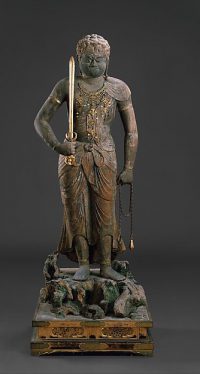This article is the second in the 10 Misconceptions about Buddhism series with scholars Robert E. Buswell Jr. and Donald S. Lopez Jr.
MAY 08, 2014
Which Mindfulness?
The modern understanding of mindfulness differs significantly from what the term has historically meant in Buddhism.

There are hundreds of forms of Buddhist meditation, some for developing deep states of concentration and mental bliss, some for analyzing the constituents of mind and body to find that there is no self, and some for meeting the Buddha face-to-face. Among these, mindfulness, commonly assumed to be the primary form of Buddhist meditation, has only recently risen to prominence.











 << The recently concluded weeklong Naropa festival that witnesses unveiling of a 60-foot-tall silk embroidery brocade of Buddha Amitabha at the newly-built Naro Palace near the Hemis Monastery, some 40 km from Leh in Jammu and Kashmir.
<< The recently concluded weeklong Naropa festival that witnesses unveiling of a 60-foot-tall silk embroidery brocade of Buddha Amitabha at the newly-built Naro Palace near the Hemis Monastery, some 40 km from Leh in Jammu and Kashmir.









 Monks prepare their fresh baked bread buns for sale to visitors at Wat Phothiyan in Muang district of Phitsanulok. (Photos by Chinnawat Singha)
Monks prepare their fresh baked bread buns for sale to visitors at Wat Phothiyan in Muang district of Phitsanulok. (Photos by Chinnawat Singha)
